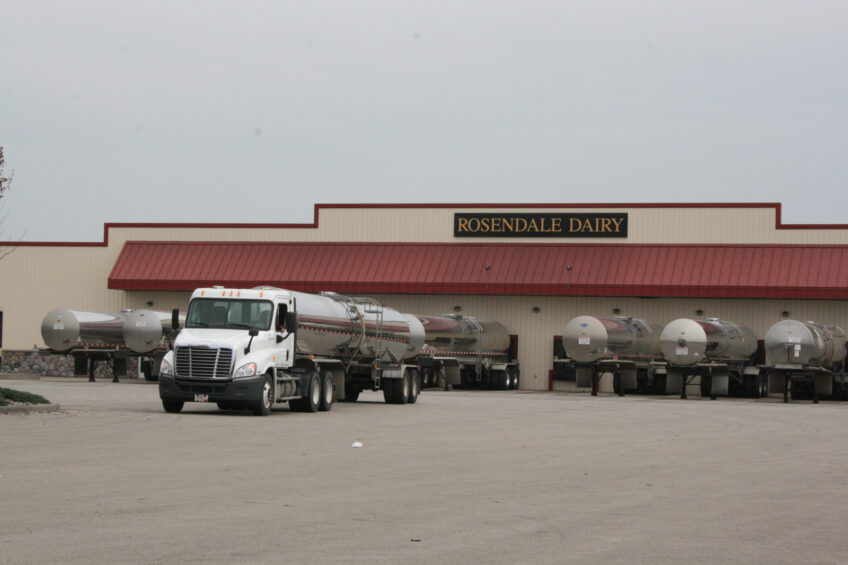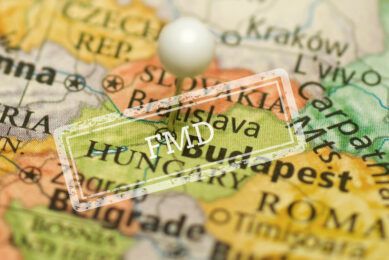America’s Dairy land

Luscious green pastures, ample access to water, a suitable geography and climate. That is what European immigrants found at the end of the 19th century in Wisconsin. Combined with their cheese-making traditions, all ingredients were there to make this America’s dairy land. ?A reputation to maintain and live up to today and in the future.
The landscape of rural Wisconsin is scattered with dairy farms. Not all of them are in operation anymore because small family farms have run out of business in the past decades. That said, dairy production is on the upswing. Smaller enterprises focusing on organic farming, medium size farms expanding into the field of making and marketing their own cheese and larger farms milking up to 10,000 cows per location to satisfy the hunger of the big cheese processors. The one thing all have in common is that they market their produce under the Wisconsin trademark, renowned worldwide as the brand of high quality cheese and dairy products. “The future looks bright,” says Ben Brancel, secretary of agriculture in the State of Wisconsin.
With Brancel’s second term on the job he can look back at some great progress made. In the last five years the turnover from the economic activity of agricultural production in Wisconsin grew from US $59 billion to US $88 billion, half of that is as a result of the dairy industry. About one in nine people living in Wisconsin depend on the agricultural sector, with cheese production being one of the main drivers. About 90% of all milk (total 30 billion pounds per year) in Wisconsin is turned into cheese. Brancel: “The cheese processors are the backbone of our dairy industry as are the further processors of whey and whey fractions.”
The liquid milk market is relatively small because transporting the relatively high amount of water to densely populated areas far away is too expensive. Producers of butter and especially Greek yoghurt are branching out and investing in new opportunities. “At this moment we don’t see high volumes yet, but we see exciting initiatives from entrepreneurs involved.”
Living up to the ‘Dairy land’ reputation
One of Brancel’s main tasks is to make sure the dairy industry in his state can live up to the ‘reputation’ of being America’s Dairy land. “For us that means creating a place of opportunity for dairy farmers, recognising the high value of dairy production and giving our farmers the best opportunities to buy and sell the best products to and from anywhere in the world. Supporting dairy farmers to be or become more profitable, that is where all our work goes.”
“The development of production on the one hand and marketing our products -branded ‘made in Wisconsin’- worldwide is high on our agenda,” says Brancel. “We have a program in place called 30 by 20. Our goal is to increase total milk production from 20 billion to 30 billion pounds by the year 2020. That said, some years ago we imported 10% of our milk from neighbouring states, even when we will reach our goal, by 2020 we will probably import 30% of our milk.” According to Brancel cheese makers invested heavily in processing plants, increasing the demand for milk. To make sure that there will be a demand for all cheese made, strong marketing plans are in place (see box ‘Strong marketing campaign’).
Exploring specialty cheeses
Cheese production in Wisconsin under the auspices of the Wisconsin Cheese makers Association dates back 124 years. For the last 20 years Wisconsin cheese makers make the best commodity cheeses such as mozzarella and cheddar. More recently there is the exploration of speciality cheese production. John Umhoefer says, “Our association hosts an annual cheese judging competition with entries from all over the world. Besides awarding the best cheeses of the world, the competition promotes the quest for making the best cheese and keeps Wisconsin cheese makers on top of their game.” According to Umhoefer, Wisconsin producers have much more to learn in value added cheeses.
“There is much more to get from specialty cheeses and our competition learns there are far more varieties to explore than currently produced in our State. Specialty cheeses are real food rock stars which are at centre stage when it comes to public attention, no-one is paying much attention to commodity cheese.”
The Association has an active role in getting farmers to up their production. “But one has to be honest. I would not advise farmers from abroad who would like to start an operation here to start with 10,000 cows. Start with 600 and grow to 2000 or 4000. Be sure you find the necessary acres and water wells before growing. Also keep in mind the local society where you produce. Ground water quality and the impact of a farm on the neighbours, especially when it comes to manure has to be taken into consideration.” According to Umhoefer, processors like to do business with small to medium size farms. “A lot of processors are relatively small scale themselves. They are hesitant to do business with one or two enormous dairy farms because of dependency. It is these smaller processors who are actively involved in making specialty cheeses and we have more of them than we had some years ago.”
Umhoefer sees many opportunities in the field of specialty cheeses. “We are already proving to make really good specialties, which are finding their way to a large part of the US and abroad. However there is an issue that stirs the passion of Wisconsin cheese makers. The export of branded cheese has its limits. Due to Europe’s claims on geographical origin, that Parmesan can only come from Italy and Feta only from Greece for instance, we are not able to export our branded cheeses all over the world. Europe is a problem in itself, but due to trade agreements there are big concerns about South Africa and Canada as well. We have the opinion that we are working with common names and no trademarks, but Europe has a different opinion. This limits us somewhat, but will not really affect the opportunities specialty cheeses have to offer for the profitability of Wisconsin dairy.”
Milk demand high and so opportunity for higher profits
The Wisconsin milk processors can use every drop of milk which is produced. That means the stakes are high in making farms more profitable. “In the past years we saw a decline of smaller farms, but for the most part that has stopped.
Opportunities in the organic market and the local for local production on the one hand and the fact that processors like to do business with smaller farms because of their own small scale on the other keeps them in business. But we need the big farms as well, volume is key, at present the demand for milk is so huge that the Wisconsin farmers cannot cope.”
To prevent milk from getting lost and help grow existing enterprises the State has programmes in place to assist the farmers. “We have grants for studies and research, help in the transition from one generation to the other and organise seminars ranging from helping in finding export opportunities to investigating the possibilities for a grass based production. You have to keep in mind our dairy sector is very diverse. Some operations have a high input, high technology approach, others a low input, lower yield operation. We want to assist them all, because we need to have everyone in the mix.”
Brancel acknowledges that growth of the dairy sector will encounter some hurdles. “We are looking intensely to the developments in Europe concerning environmental issues and societal demands. We understand that these issues will increase production costs and see that the same issues will influence Wisconsin production as well. Especially manure management is high on our agenda. To mitigate potential challenges we look closely to Europe. We recognise that Europe is one step ahead in this field. Looking into the processes going on in Europe, the studies done, we want to become more savvy in tackling these issues. When looking at Europe, we see our future in front of us, that means we can anticipate and have the right insights to base our legislation on and keep a focus on possible threats.”

Strong marketing campaign
The mission of the Wisconsin Milk Marketing Board is very straight forward; grow the demand for Wisconsin milk products. In its 30 years of existence the semi-governmental organisation can look back at some impressive results. In the mid-eighties of the last century Wisconsin dairy farmers were confronted by a huge surplus of dairy products. At that time, the leaders of the coops decided that offence is the best defence and developed a check off program, a ‘tax’ on produced milk, for marketing purposes. “A daunting step at a time when farmers couldn’t make ends meet, but very forward thinking,” says James Robson, the current director of the Milk Marketing Board. The check off nowadays is 15 cents per 100 pounds of milk produced, the money is directly used to develop markets domestic and abroad. The Wisconsin Milk Marketing Board leaves no stone unturned in their quest to promote the Wisconsin brand and build their brand equity. Traditional road side bill boards, magazine ads are still in place, but there is a multi-media approach with dedicated websites, social media strategies and help for restaurant owners with recipes on the one hand and help for farmers and cheese makers to upgrade their expertise on the other hand. Robson: “We want to educate people to do more with the Wisconsin branded cheese. Traditionally we are used to putting cheese on a sandwich, but there are endless other opportunities. There is room for further improvement, just by looking at statistics one can come to such a conclusion. For instance; the per capita consumption of cheese in countries such as Italy and Greece is almost double that of the consumption in the US. Some consumers are just starting to explore cheese, there is a world of opportunity for us.”
Connie Seefeldt, chair of the Wisconsin Milk Marketing Board and one of the active farmers involved in setting the strategy of the Board says: “Besides growing demand we are actively involved in growing Wisconsin milk supply as well. The times that there was a surplus of milk are long gone. Today we import train charts with billions of pounds of milk from other states just to fulfil the demand of our processors and cheese makers. Giving our farmers the direction on how to optimise production is essential for our future.”
Join 13,000+ subscribers
Subscribe to our newsletter to stay updated about all the need-to-know content in the dairy sector, two times a week.













